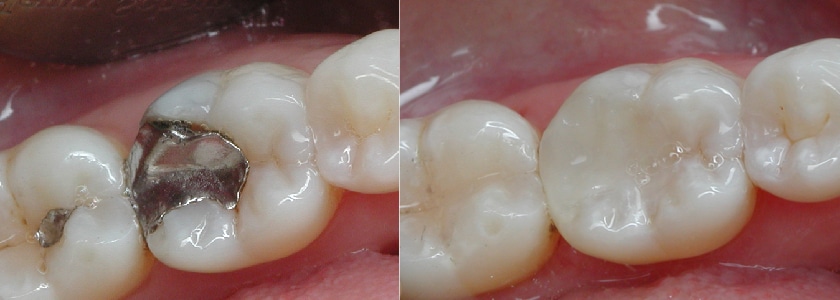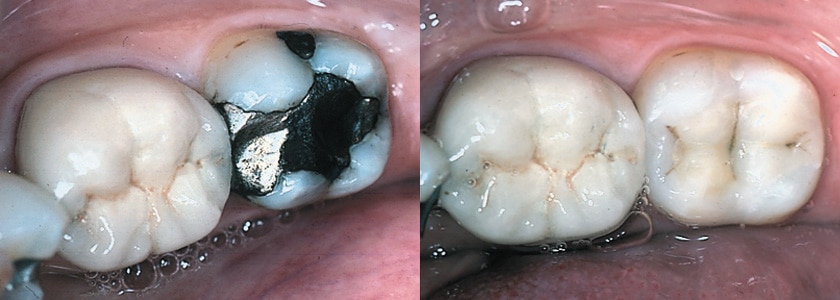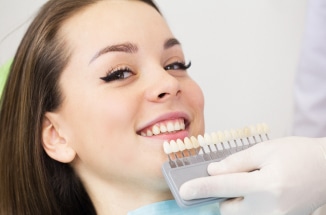What Causes A Cavity?
When decay-causing bacteria come into contact with sugars and starches from foods and drinks, they form an acid. This acid can attack your tooth’s enamel, causing it to lose minerals.
When a tooth is repeatedly exposed to acid, such as when you frequently consume food or drinks high in sugar and starches, the enamel continues to lose minerals. A white spot may appear where minerals have been lost. This is a sign of early decay.
Tooth decay can be stopped or reversed at this point. Enamel can repair itself by using minerals from saliva and fluoride from toothpaste or through the application of fluoride by Dr. Kaur or your dental hygienist. If more minerals are lost than can be restored, the enamel weakens and eventually breaks down, forming a cavity.
Symptoms Of A Cavity
In early tooth decay, there are not usually any symptoms. As your tooth decay advances, it can cause a toothache (tooth pain) or tooth sensitivity to sweets, hot, or cold. If the tooth becomes infected, an abscess, or pocket of pus, may form, causing pain, facial swelling, and fever.
Diagnosis
Tooth decay can be found during a regular dental check-up. Tooth decay signs include white, brown, or black staining on your tooth. If the decay is more advanced, it may form a hole, or cavity. Dr. Kaur can also check your teeth for soft or sticky areas or take an x-ray, or an intraoral photograph of your tooth which can show decay.
Let Dr. Kaur, Help You Maintain Your Oral Health With Beautiful Tooth-Coloured Fillings
If tooth decay is still in its early stages, before a hole (cavity) forms, Dr. Kaur can apply fluoride to reverse the decay. However, it is very common that Dr. Kaur will treat your cavities by filling them. Dr. Kaur will remove the decayed tooth tissue and then restore the tooth by filling it with a tooth-coloured filling material.
Helpful Tips
Here are some things you can do to prevent tooth decay:
- Use fluoride, a mineral that can prevent tooth decay from progressing, and even reverse, or stop, early tooth decay. You can get fluoride by:
- Brushing with a fluoride toothpaste.
- Drinking tap water that has fluoride.
- Using fluoride mouth rinse.
- Have a good oral hygiene routine. Brush your teeth at least twice a day with a fluoride toothpaste, preferably after a meal, and regularly clean between teeth with floss or another interdental (between-the-teeth) cleaner. Make sure that you brush your teeth before going to bed! This is hugely important to prevent tooth decay!
- Make smart food choices that limit sugary drinks and foods high in sugars and starches. Eat nutritious and balanced meals and limit snacking.
- Do not use tobacco products, including smokeless tobacco. If you currently use tobacco, consider quitting.
- Visit Toothbuds Dentistry for regular check-ups and professional cleanings with our professional hygienist!
A note to parents: Visit A Healthy Mouth for Your Baby and The Tooth Decay Process: How to Reverse It and Avoid a Cavity, to learn how to care for your baby’s and children’s teeth, including information on when to start using fluoride toothpaste. In addition, when your child’s permanent (second) teeth come in, speak with Dr. Kaur about sealants. They cover the chewing surfaces of teeth and can help prevent decay by protecting your child’s teeth from acid forming bacteria.
People of all ages can get tooth decay once they have teeth—from childhood through the senior years. Young children are at risk for “early childhood caries,” sometimes called baby bottle tooth decay. This severe tooth decay starts in the baby’s front teeth and extends to the back teeth.










